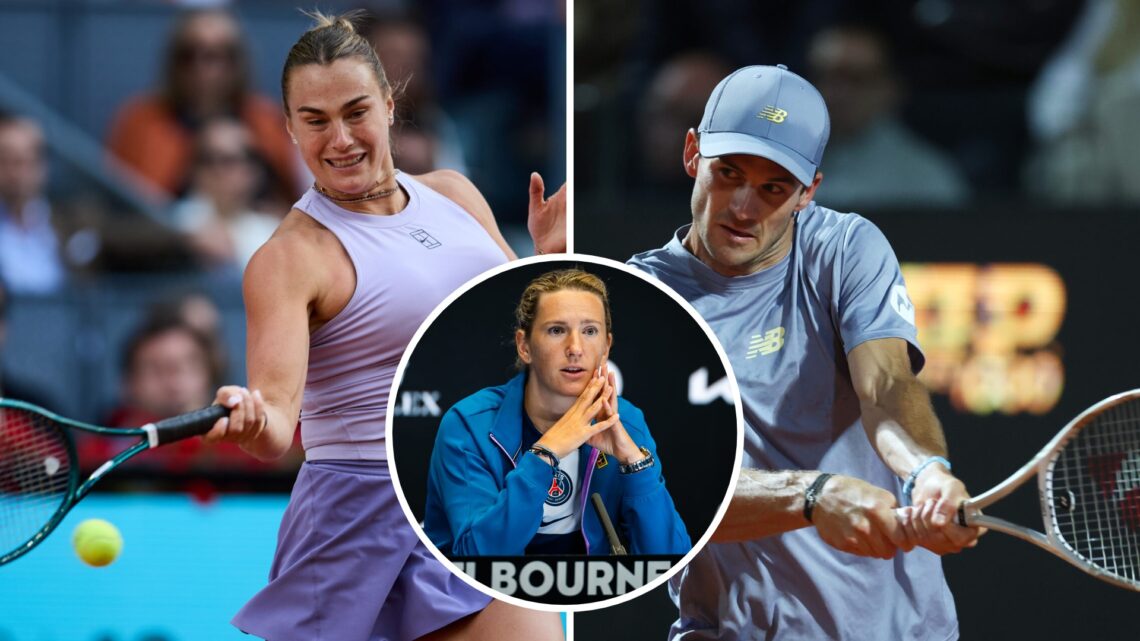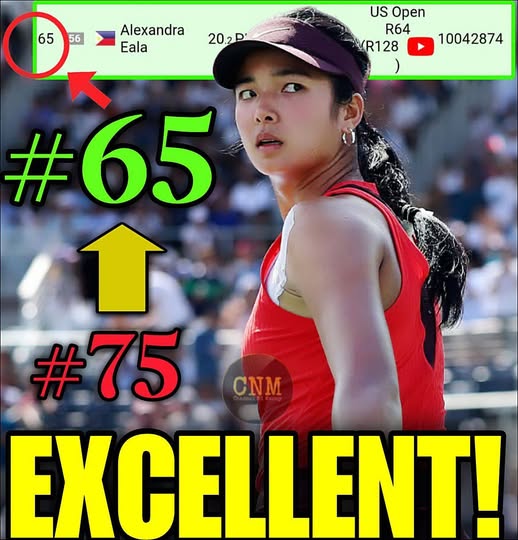When former World No. 1 Victoria Azarenka speaks, tennis fans listen. Known for her fierce competitiveness and no-nonsense commentary, Azarenka has never shied away from giving honest insights into the game. So when she was recently asked who hits the ball harder between Aryna Sabalenka and Tommy Paul, her answer wasn’t just cheeky—it was unexpectedly thoughtful, drawing attention from both the ATP and WTA spheres.
In an era when power tennis dominates both the men’s and women’s games, Azarenka’s response opened the door to a broader discussion: What does “hitting hard” really mean in pro tennis—and who truly reigns in raw power?
Let’s break down her comments, explore the Sabalenka–Paul power comparison, and examine what this reveals about how players, fans, and experts perceive pace, precision, and presence on the court.
A Candid Azarenka Moment: The Interview That Sparked Debate
Victoria Azarenka has become a go-to voice for tennis truth bombs, whether in press conferences or casual podcast appearances. During a recent lighthearted segment with the WTA Tour, Azarenka was asked a playful but loaded question:
“Who hits the ball harder—Aryna Sabalenka or Tommy Paul?”
Without skipping a beat, Vika chuckled and replied:
“Aryna. Hands down. Have you ever returned her serve?”

Her delivery was funny, yes—but also rooted in experience. Azarenka has faced Sabalenka in intense match play. She’s practiced alongside her. And when someone like Azarenka singles out a player’s power as more impressive than a top-tier male pro, that statement carries weight.
Sabalenka’s Reputation: WTA’s Queen of Power
Aryna Sabalenka has long held the reputation as one of the most explosive hitters on the women’s tour. Her serve often exceeds 120 mph, and her groundstrokes are accompanied by a thunderous grunt and an unmistakable ball pop that echoes across courts.
According to WTA data:
- Her average forehand speed rivals those of ATP mid-tier players.
- Her first serve speed ranks among the top 3 in the WTA (alongside players like Elena Rybakina and Naomi Osaka).
- In 2024, her serve averaged 117 mph, peaking at 123 mph in key matches.
Sabalenka’s game is built on controlled aggression. And unlike other power players who rely solely on pace, she’s added layers—depth, direction, and mental maturity—to become a two-time Grand Slam champion.
Azarenka, having played her at close quarters, knows exactly what it’s like to deal with that relentless barrage.
Tommy Paul: More Than Just Power
Now, what about Tommy Paul?
The 27-year-old American has quietly become one of the most improved players on the ATP Tour. While he’s not known primarily for power, Paul has a clean, efficient forehand and a deceptively fast first serve. In fact, his fitness and court coverage have been his calling cards—but that doesn’t mean he lacks pop.
In recent matches, Paul’s:
- Forehand speeds have averaged in the 80–90 mph range.
- First serves clock in regularly at 125–130 mph.
- Backhand is flatter and quicker than it appears, often catching opponents off-balance.
So, does he hit “hard”? Sure. But Azarenka’s point is that Sabalenka’s shots feel heavier, maybe even more intimidating due to spin, sound, and rhythm disruption.
Why Vika’s Answer Matters: Breaking Gender Norms in Tennis Power
Azarenka choosing Sabalenka over a male pro subtly challenges the outdated narrative that male players always hit harder.
In a sport where speed guns dominate coverage, we often forget that how the ball is struck—and the player’s presence on the court—can change the perception of power.
- “Heavy” shots come from spin + depth + speed.
- “Fast” shots might travel linearly but be easier to redirect.
Sabalenka delivers heavy balls that stick to the racket, rush opponents, and cause mis-hits. That’s a different kind of power—and it’s what Azarenka is referencing.
Moreover, her comment is a nod to how elite women’s tennis has evolved. Players like Sabalenka, Gauff, Rybakina, and Swiatek don’t just play like men—they’ve redefined power on their own terms.
Social Reactions: Fans Light Up Over Azarenka’s Choice
It didn’t take long for social media to pounce on Azarenka’s quote. On X (formerly Twitter), fans debated the comparison, praised her honesty, and started dreaming up hypothetical mixed matches.
Top replies included:
- “Vika always keeps it real. Sabalenka’s groundies look like they could break racquets.”
- “Tommy Paul is quick and smooth, but let’s be honest—Sabalenka hits like she’s trying to knock down walls.”
- “Put Sabalenka in ATP doubles and she’d hold her own on serve.”
Some fans even joked that a Sabalenka vs Paul exhibition should happen—perhaps during the offseason in an event like World Tennis League or United Cup.
The Deeper Angle: Respect Among Players
At its core, Azarenka’s response wasn’t just playful—it was respectful. She gave Sabalenka her flowers not just for her results, but for the visceral experience of facing her.
That kind of recognition matters. In an era where women’s sports still battle for equal coverage and respect, having a Grand Slam champion confidently state that a woman hits harder than a top male player? That’s powerful.

Azarenka, now a mother and one of the most vocal advocates for mental health and gender parity in tennis, has always used her voice to elevate the sport. This moment is just another example.
Conclusion: Why the Sabalenka vs Paul Comparison Is Bigger Than a Soundbite
So, who hits harder—Aryna Sabalenka or Tommy Paul?
If you ask Victoria Azarenka, there’s no hesitation: Sabalenka.
But beyond the laughs and fan debates, this moment reveals something deeper about where the game is going:
- Women’s tennis has power, depth, and presence.
- Comparisons across tours should be welcomed—not avoided—as a way to highlight how talent manifests in different forms.
- And yes, sometimes the most thunderous hits on tour aren’t just coming from the men’s side.
Sabalenka hits hard. Really hard.
But the truth behind Vika’s answer isn’t about numbers—it’s about how her shots make you feel.
And in tennis, that might just be the biggest impact of all.

